This 1938 DeWald A-501 Harp is back to it’s original look. 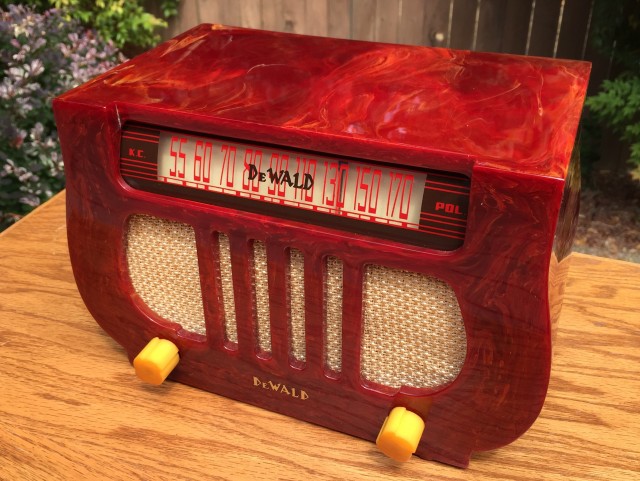
Below is what it looked like before.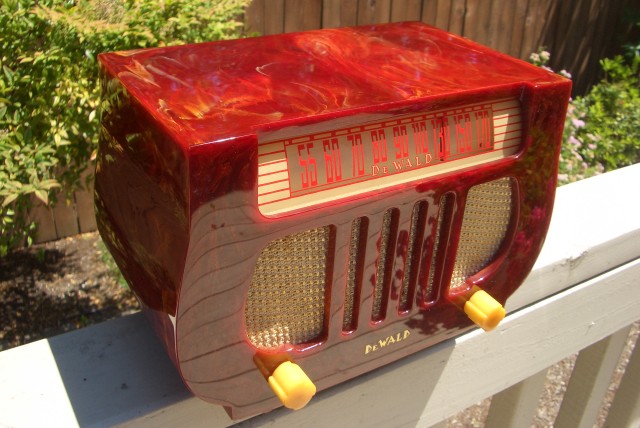
The Catalin radio looks good in both photos. The difference is that the dial in the top photo is the style that was originally in this radio. When I got this harp from another collector about six years ago, the original dial had been broken, because the Catalin case had shrunk. Fortunately, there was no damage to the case. He was able to find the red & beige dial…which had been in a wooden DeWald model…and looked okay in this one too.
It still bothered me a little that the Red Harp didn’t have the original dial. Recently, I came across a very broken Plaskon DeWald radio that had the dial I needed. The only problem was that it wouldn’t fit, since the Catalin case had shrunk slightly from it’s original size. Here are the two curved glass dials: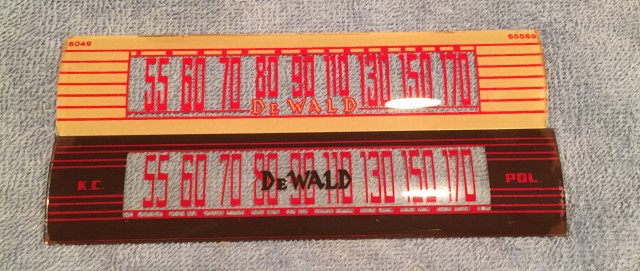
A glass company here in Oregon was a little hesitant to grind down the edge of a dial that is 77 years old, but they did a great job.
And now, it’s an even better looking 1938 Red DeWald Harp: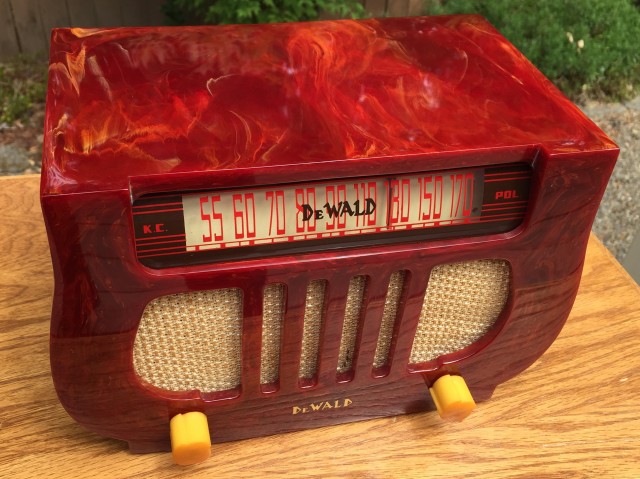
Bonus…here’s our brown one with yellow swirls: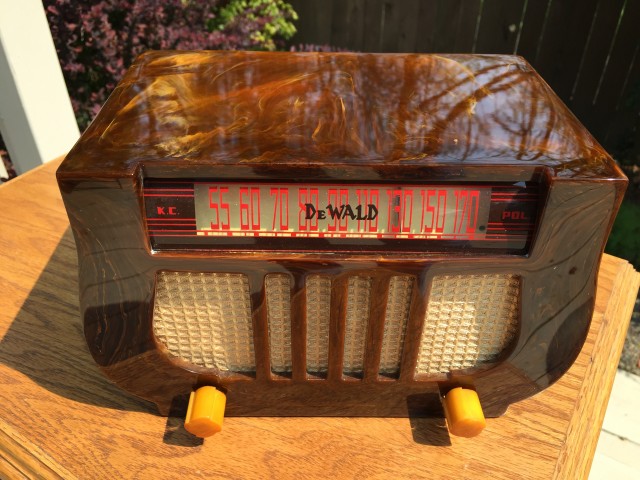
Note: After publishing this article, I’ve heard that sometimes the beige & red dial was used in the various colors of Dewald Harps, even though it was not original to this particular red Harp.
Wow, what a gorgeous result! The reflective finish to the catalin is extraordinary! I’d love to know – did you have to use a rotary polishing tool to achieve this finish?
Thank you for the nice comment Michelle. The Harp was hand polished with Simichrome. Also, the sun does a great job of showing Catalin. By the way, the brown one is just as shiny and was also polished by hand. That one did have extremely fine sandpaper (2500 grit) used prior to the polishing with Simichrome.